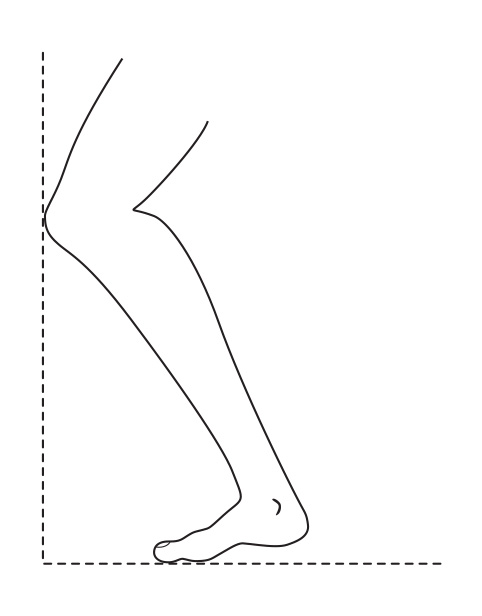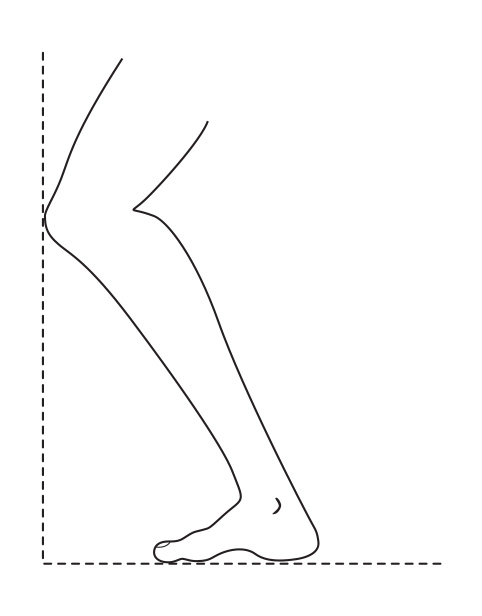Lunge test
Overview
The lunge test is a weight bearing test used to assess the range of motion of the ankle joint. It’s also used to evaluate the tension on the w and triceps muscles. Too much tension may increase the risk of lower limb injury.
To perform the test
Ask the customer to stand facing a wall and approximately 10cm away from it. Note: a very tall person may need to stand further away from the wall, and a short person may need to stand closer.
- Ask the customer to move one foot back for balance.
- Ask the customer to bend the knee of the front leg to see how close the knee can come to the wall. The angle between the lower leg and the wall should be approximately 35°.
- If the knee can touch the wall with the heel still on the ground, this constitutes a pass. If the heel lifts off, it’s a fail.
- Select pass or fail (for each leg) in the relevant field on the Sensokinetic website.

Lunge test fail (heel raised)

Lunge test pass (heel remains flat)